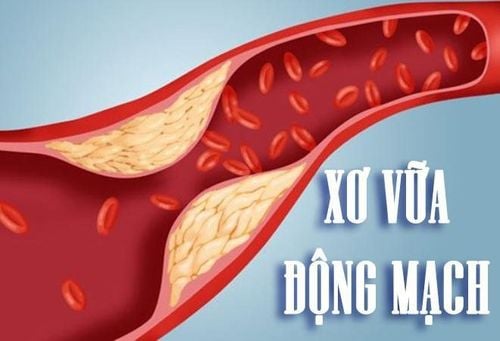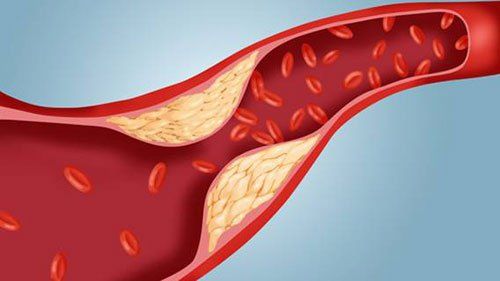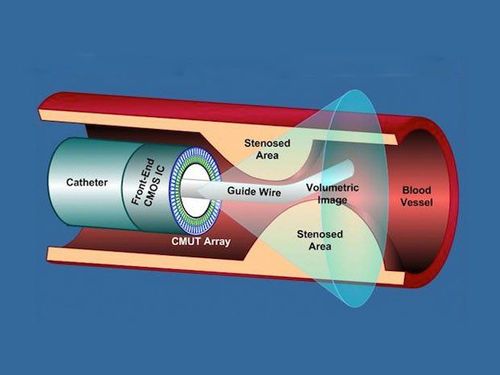This is an automatically translated article.
The article is professionally consulted by the Doctor of Cardiology Interventional Unit, Vinmec Times City International General Hospital.Intra-coronary ultrasound helps to accurately assess the damage in coronary arteries, diagnose the nature and extent of atherosclerosis, accurately measure the narrow lumen area.
1. Types of atherosclerosis
Atherosclerosis is the cause of narrowing and formation of thrombus in the coronary arteries, leading to coronary artery occlusion, which is a very common condition in all subjects. Especially in our country, coronary heart disease is increasing and becoming a matter of great concern.Coronary arteries, when narrowed or blocked, are considered serious diseases because they can lead to many dangerous complications, even life-threatening. In damaged coronary arteries, the distinction between the components of the arterial wall becomes more difficult and depends on the composition of the atherosclerotic plaque. Atherosclerosis includes 3 common types:
Hypoechoic plaque (or soft plaque): shows that the plaque contains a lot of lipids. In diagnosing the degree of coronary atherosclerosis, intravascular thrombus is often confused with soft atherosclerotic plaques, but in fact it is completely distinguishable because the thrombus is movable, the border has many small lobes. and often migrate away from the arterial wall during cardiac cycle; Atheroma has many fibrous organizations: this type has a brightness similar to the outer layer of the blood vessel wall, containing a large amount of elastic fibers and colloid; Calcified atherosclerotic plaque: This type of atherosclerosis is defined by the brightness of the plaque with acoustic shadowing.

Xơ vữa động mạch gồm có 3 loại thường gặp
2. Alternative measures coronary angiography in diagnosing degree of atherosclerosis
Recently, coronary angiography is still considered the "gold standard" in diagnosing the degree of coronary atherosclerosis, helping doctors to provide appropriate treatment, such as indications for internal therapy. surgery, coronary intervention or the decision to have coronary artery bypass graft surgery.The distribution and heterogeneity of the components that make up the atherosclerotic plaque are related to the outcome and prognosis of the catheter coronary interventional procedure as well as to the determination of to determine the risk of recurrent events in patients with acute coronary syndromes. However, coronary angiography is limited in its ability to assess the distribution of atherosclerotic plaques, the extent of arterial damage, or can only evaluate changes within the vascular lumen. by the time.
Today, the development of coronary interventional techniques has created new opportunities for more effective treatment of patients with coronary artery disease. In particular, intra-coronary ultrasound is an advanced technique, capable of directly assessing and diagnosing the degree of coronary atherosclerosis accurately, thereby guiding effective interventional treatment of coronary artery disease. more fruitful.
3. Accurately diagnose coronary atherosclerosis by intravascular ultrasound technique

Chẩn đoán chính xác mức độ xơ vữa động mạch vành bằng kỹ thuật siêu âm trong lòng mạch
The two-dimensional images from the IVUS ultrasound also allow the physician to accurately characterize the coronary lumen in locations that are difficult to assess with classical coronary angiography, such as at the common body of the left coronary artery, or the origin of the anterior interventricular artery, at the circumflex artery and the right coronary artery, etc. When the ultrasound probe is automatically pulled out at a fixed speed If determined, it is possible to reconstruct the image of the vessel wall and lumen in 3D based on the machine's software system.
Intra-coronary ultrasound can help distinguish 3 structural layers of the vessel wall, including the inner layer, the middle layer, and the outer layer. In fact, coronary angiography detects only 10-15% of patients with normal coronary artery disease in subjects with suspected coronary artery disease. However, with IVUS, the ability to detect atherosclerotic plaques can be as high as 50%.
Currently, Intra-Coronary Ultrasound technique has been deployed at Vinmec International General Hospital system. The technical process and equipment for endoscopy at Vinmec meet international standards and are always guaranteed the highest quality. The technique performed by Vinmec's experienced team of leading medical doctors will give accurate and reliable results.
In addition, Vinmec's Cardiology Department always receives a lot of praise and satisfaction from domestic and international customers, being the pioneers in successfully applying the world's most advanced techniques in the treatment of diseases. cardiovascular theory.
A team of highly qualified and experienced specialists: qualified doctors from Master's to Professor's and Doctor's degrees, reputable in medical treatment, surgery, interventional cardiac catheterization. Intensive training at home & abroad. In particular, Prof. TS.BS Vo Thanh Nhan - Cardiology Director of Vinmec Central Park was recognized as the first and only expert in Vietnam to be awarded the "Proctor" certificate on TAVI. State-of-the-art equipment, comparable to major hospitals in the world: The most modern operating room in the world; The most modern silent magnetic resonance imaging machine in Southeast Asia; The CT machine has a super-fast scanning speed of only 0.275s/round without the use of drugs to lower the heart rate; 16-sequence PET/CT and SPECT/CT systems help to detect early damage to cardiovascular organs even when there are no symptoms of the disease. Applying the most advanced advanced cardiovascular techniques in the world in treatment: Painless open heart surgery; Percutaneous aortic intervention without general anesthesia; Treatment of mitral regurgitation through the catheter has a success rate of 95%; Ventricular-assisted artificial heart transplantation for patients with end-stage heart failure prolongs quality of life beyond 7 years. Cooperating with leading cardiovascular centers in Vietnam and the world such as: National Heart Institute, Cardiology Department of Hanoi Medical University, University of Paris Descartes - Georges Pompidou Hospital (France), University of Pennsylvania (France), University of Pennsylvania United States)... with the aim of updating the most modern cardiovascular treatments in the world. To be examined and treated with leading Vinmec cardiologists, please book an appointment online at the website or contact Vinmec Health System nationwide for service.
Please dial HOTLINE for more information or register for an appointment HERE. Download MyVinmec app to make appointments faster and to manage your bookings easily.













